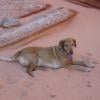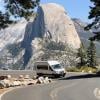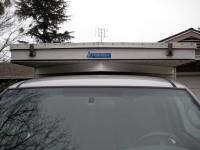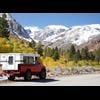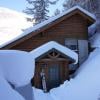Wind fairing
#11

Posted 12 July 2009 - 06:04 AM
If anyone has more info on mileage with/without the fairing, please post.
On another note, it seems 4WC has increased the height of the front of the closed camper by 2-3 inches over previous models. I'm not sure when they started this, or if it makes any difference to the wind resistance. Anyway, thanks for all the info, this site is great.
2009 FWC Hawk Shell- Mods coming soon
#12

Posted 12 July 2009 - 07:03 AM
I have a stock yakima fairing on my dodge 1500 extended cab with hawk with nonextended bed. I have not noticed any difference with or without the fairing with regards to mileage. I do find the camper easier to clean with less bug guts on the front of the camper....Noise is a bit better.
The two side of the camper catch a lot of wind, too. I wonder if a fairing for the two sides of the camper might help, too.
good luck.
dave in seattle
#13

Posted 20 June 2010 - 07:42 PM
I had such a large gap (~5") between cab and camper which was creating a big air trap, I chose to move the air off to the sides. I found a piece of 4" L-shaped galvanized flashing at the local steel yard, bend to shape, weld on few L-brackets for extra stiffening, installed some t-nuts on bottom side of camper and bolted it on. Easy project for less than $25. Scan Gauge was reading 16.5-17mpg before install, after installation, it's reading 18-19 @ ~65-68mph. The reduced wind noise was well worth it alone, the mileage improvement an added bonus.
Hmm, food for thought, I think I'll give this a try on my Eagle. Thanks for the info.
Billm
2008 Frontier with a 2010 Eagle shell
#14

Posted 21 June 2010 - 01:46 AM
The picture in your post is the one that inspired me to make mine. Appx 4" PVC fence post cover cut v in back heated and bent. I put a 1/4" Stainless flat bar with a threaded hole in each end and at the V. Bolted from the top.Hmm, food for thought, I think I'll give this a try on my Eagle. Thanks for the info.
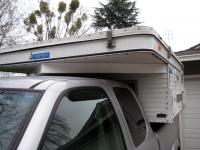
Bill Harr 2005 Tundra and a 2013 Hawk custom interior.
#15

Posted 21 June 2010 - 02:52 AM
Patrick
2015 FWC Hawk Flatbed
#16

Posted 21 June 2010 - 04:32 AM
The Tiger Motor Home by Provan incorporates features that probably provide pretty good wind drag reductions, including a close fit between the camper, the roof of the truck, and side fairings which clean up the flat panels on the forward part of the FWC/ATC camper. The corners of the Tiger design are rounded. The man who designed all these campers and RVs is probably the most experienced individual associated with our type of off road camper. The Tiger is a child or brother to our light weight popup off road types with features we could use.
But, let me observe the following about fuel economy; Having driven a truck with a Keystone mounted many miles cross country and having made careful observations on fuel economy numbers, I can say with assurance that speed and weight are the most significant users of fuel.
By carefully driving no faster than 55 miles per hour, a truck loaded with a FWC/ATC popup camper will achieve significantly better fuel economy numbers. For example, on a cross country trip two summers ago in company with another camper from Idaho to Wisconsin we achieved solid 21 mpg numbers, validated by carefully comparing our numbers with the other truck. As soon as the other camper turned south toward his home in Wisconsin, and we went out own way, increasing speed to 60 - 65 mph, the fuel economy immediately decreased to between 18 and 19 mpg. When we became rushed on the last day of the trip and begin to travel at Interstate highway speeds, the fuel economy went down to 14 - 16 mpg. The type of truck here is not a subject because I believe speed and weight are far more important than the type of truck.
Compared to these simple fairings above, speed will be a more important factor in fuel economy. Thus, the key to saving fuel is to SLOW DOWN and use hyper mileage techniques. Never exceed 55 mph. Accelerate gradually. Never accelerate going up hill. Bleed off speed when going up hill. A manual transmission offers significant advantages by permitting the driver to force the engine to remain longer in lower RPM ranges (less than 2000 rpm with a pushrod gasser). The terrain can be used to advantage. Cruise control will cost money over using the "constant pressure" technique of accelerator pedal management.
Driving techniques and speed reduction yield fuel savings that cost little to implement. Combined with fairings, these techniques would probably provide really excellent results. John D
#17

Posted 21 June 2010 - 04:45 PM
0 user(s) are reading this topic
0 members, 0 guests, 0 anonymous users




